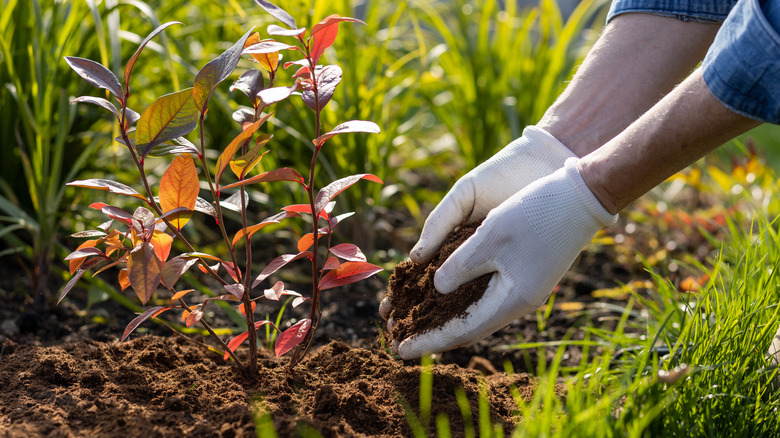Many people believe that pruning plants in the fall is a good idea with the belief that it makes the garden look tidier, encourages growth, and prepares plants for their dormant season. But what if leaving trees and bushes alone during autumn might actually be better for your garden and the environment? It’s tempting to want to clean up your outdoor spaces as the days get shorter, but it’s vital to think about how your woody perennials function during this time of year and how pruning could affect them.
By taking a closer look, you might discover that nature knows best. Keeping foliage intact is important for nourishment and protection against the cold. Plus, an untouched garden creates thriving habitats for pollinators and other beneficial creatures and helps prevent disease outbreaks. By reconsidering the conventional wisdom and embracing the resilience of nature’s design, you might discover a delicate balance that thrives in an untouched garden over the winter.
How pruning can impact winter survival
It is crucial for all of us to understand the energy systems in our plants, so that we can work with the energy systems and help keep our plants alive longer! once late August comes in the sun angle starts to drop in the sky, the days start to shorten the temperature start to drop. These cues are recognized by the plant, and the plant starts to prepare for dormancy. The number one driver, a fall energy in the plants, is food storage. The plant is trying to maximize every bit of photosynthesis can get from its leaves, to create food, and pull it down into the routes for winter survival. This is why we do not prune Woody perennials, whether it’s trees or shrubs, in the late summer and fall. If we prune, that means we are removing leaves, which are crucial to creating food right now. Pruning also encourages new growth as the plant tries to repair where it was cut. We do not want any of this energy going into new growth right now, we want it going down into the roots . #garden#gardeningtok#zone5b#zone5gardening#zone5bgardening#gardendesign#gardendesign#pruning#phenology#perennials#treesararlingtonheightsillinoisr#arlingtonheightsil
♬ original sound – Powers_Plants
Watch on TikTok
During the fall season, plants tend to hold onto energy reserves in their roots rather than using them for above-ground development. When you prune plants before their dormant period, they redirect resources to heal the wounds caused by the process instead of nourishing their roots. This can weaken the plant’s ability to handle winter stresses and impact its growth in spring.
Freshly-cut branches and stems can be vulnerable, especially during the fall when plants are entering their dormant phase. Wounds created during pruning may not fully heal and can attract pests and diseases, particularly in damp and cold conditions. This increases the risk of infections that can damage the plant and soil. Plus, pruning can accidentally remove new growth, resulting in fewer buds in the spring. It can also stimulate new growth that doesn’t have time to fully develop before winter weather arrives. Keeping dried leaves and seed heads around could add some charm to your garden during the fall season while also giving beneficial insects a cozy place to hang out.
An autumn alternative

Fortunately, there is an alternative practice you might want to consider. Instead of pruning, you could apply a layer of mulch to the top of the soil, which would act as a buffer against extreme temperatures, reducing the risk of frost heaving. Plus, it helps keep the soil moist for healthy root development. Over time, the mulch will enrich the soil with nutrients, making it perfect for thriving growth in the spring. Additionally, though you shouldn’t partake in any heavy pruning during the fall, if you notice any diseased or damaged branches, it’s important to remove them to keep infections from spreading and maintain your garden’s health.
Also keep in mind that you never want to prune your garden in the summer heat, as this could severely damage your plants as well. Waiting until late winter or early spring for major pruning is best. This allows plants to focus on strengthening their roots and preserving important foliage during the fall and winter months, which sets them up for a beautiful and healthy springtime.




